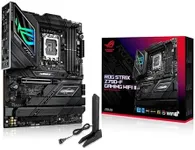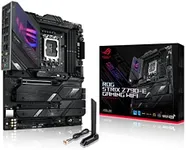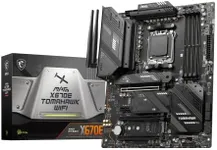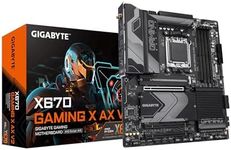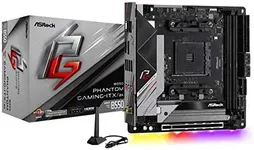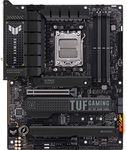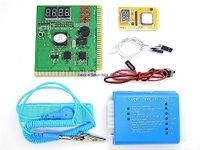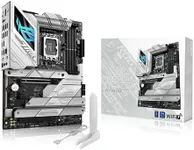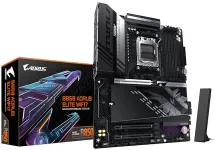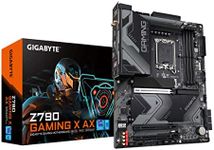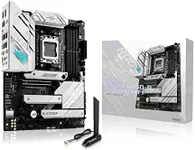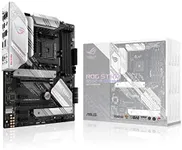Buying Guide for the Best Gaming Motherboards
Choosing the right gaming motherboard is crucial for building a powerful and reliable gaming PC. The motherboard is the backbone of your computer, connecting all the components and ensuring they work together seamlessly. When selecting a gaming motherboard, consider the compatibility with your CPU, the features you need, and the future upgrade potential. Here are some key specifications to look at and how to navigate them.Form FactorThe form factor of a motherboard refers to its size and shape, which determines the type of case it will fit into. The most common form factors are ATX, Micro-ATX, and Mini-ITX. ATX motherboards are larger and offer more expansion slots and features, making them ideal for high-performance gaming builds. Micro-ATX boards are smaller but still provide a good balance of features and expandability. Mini-ITX boards are the smallest and are perfect for compact builds, though they may have fewer features and expansion options. Choose a form factor based on the size of your case and your need for expandability.
ChipsetThe chipset is a crucial component that determines the motherboard's capabilities and compatibility with CPUs. Different chipsets offer varying levels of performance, features, and support for overclocking. For gaming, look for chipsets that support the latest CPUs and offer features like PCIe 4.0, multiple USB ports, and good overclocking potential. High-end chipsets provide better performance and more features, while mid-range chipsets offer a good balance for most gamers. Choose a chipset that matches your CPU and meets your performance needs.
RAM SlotsRAM slots on a motherboard determine how much memory you can install and the type of memory supported. Most gaming motherboards have four RAM slots, allowing for up to 64GB or more of RAM. Some smaller boards may have only two slots. The type of RAM supported (DDR4, DDR5) is also important for performance. More RAM slots and higher capacity support are beneficial for gaming and multitasking. Choose a motherboard with enough RAM slots to meet your current and future memory needs.
PCIe SlotsPCIe slots are used to connect graphics cards and other expansion cards to the motherboard. The number and type of PCIe slots (x16, x8, x4) determine the expandability and performance of your gaming PC. For gaming, a motherboard with at least one PCIe x16 slot is essential for installing a high-performance graphics card. Additional PCIe slots can be useful for adding other components like sound cards or network cards. Choose a motherboard with enough PCIe slots to support your graphics card and any other expansion needs.
Storage OptionsStorage options on a motherboard include the types and number of connections for hard drives and SSDs. Look for motherboards with multiple SATA ports and M.2 slots for SSDs. M.2 slots are particularly important for gaming as they support faster NVMe SSDs, which can significantly improve load times and overall performance. Choose a motherboard with enough storage options to accommodate your current and future storage needs, ensuring you have room for both SSDs and traditional hard drives.
ConnectivityConnectivity features on a motherboard include USB ports, Ethernet ports, Wi-Fi, and Bluetooth. These features determine how you can connect peripherals and network devices. For gaming, having multiple USB ports (including USB 3.0 and USB-C) is important for connecting gaming accessories like keyboards, mice, and controllers. Ethernet ports are essential for stable internet connections, while built-in Wi-Fi and Bluetooth can add convenience. Choose a motherboard with the connectivity options that match your gaming setup and preferences.
AudioAudio quality on a motherboard is important for an immersive gaming experience. Look for motherboards with high-quality onboard audio solutions, such as those with dedicated audio chips and support for surround sound. Some motherboards also offer features like audio shielding and high-end capacitors for better sound quality. If you are an audiophile or use high-end headphones, consider a motherboard with superior audio features. Choose a motherboard with audio capabilities that match your gaming and listening preferences.
BIOS/UEFIThe BIOS/UEFI is the firmware interface that allows you to configure hardware settings on your motherboard. A user-friendly BIOS/UEFI with features like easy overclocking, fan control, and hardware monitoring can make a big difference in managing your gaming PC. Look for motherboards with intuitive and feature-rich BIOS/UEFI interfaces. Choose a motherboard with a BIOS/UEFI that offers the customization and control you need for optimizing your gaming performance.
